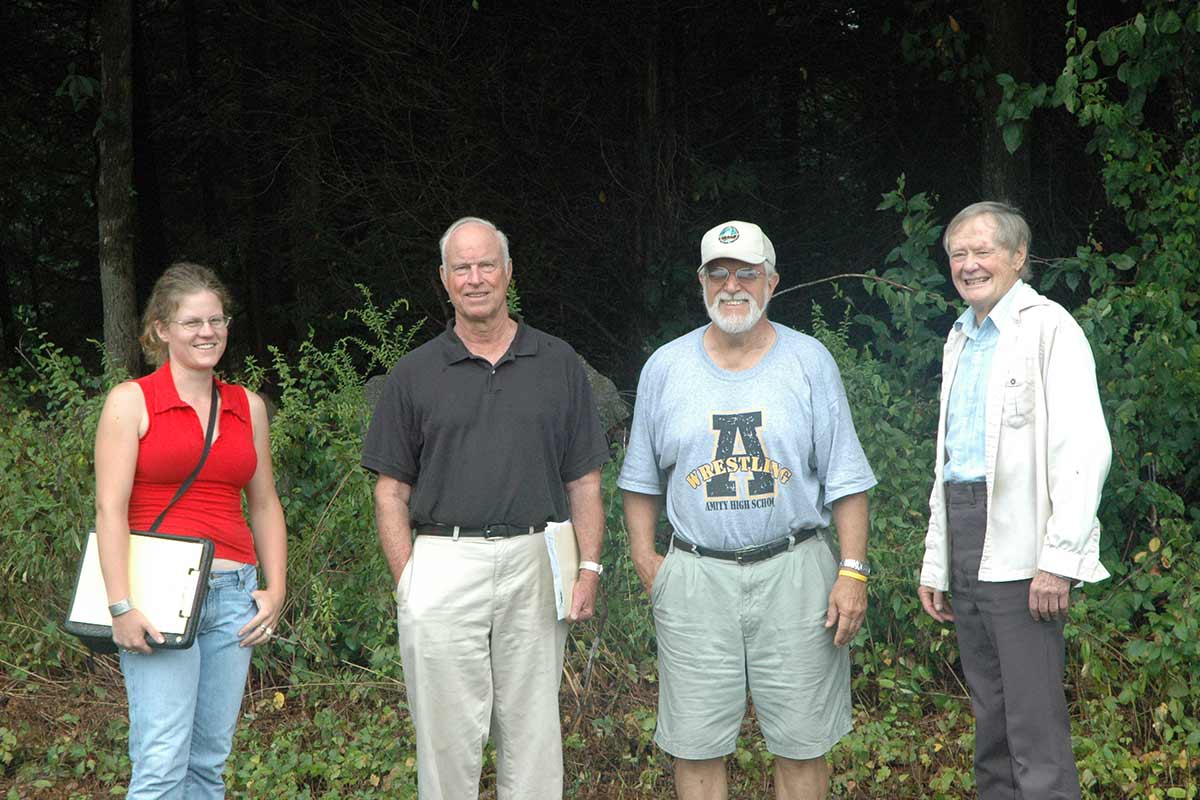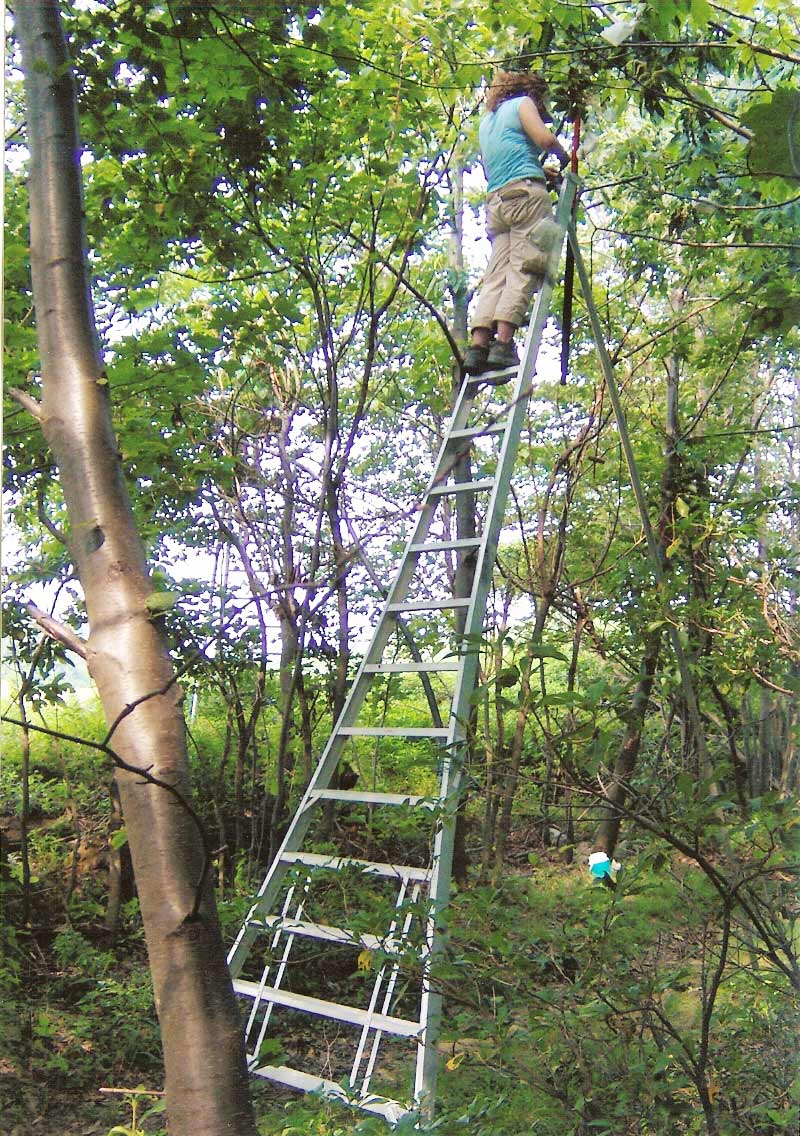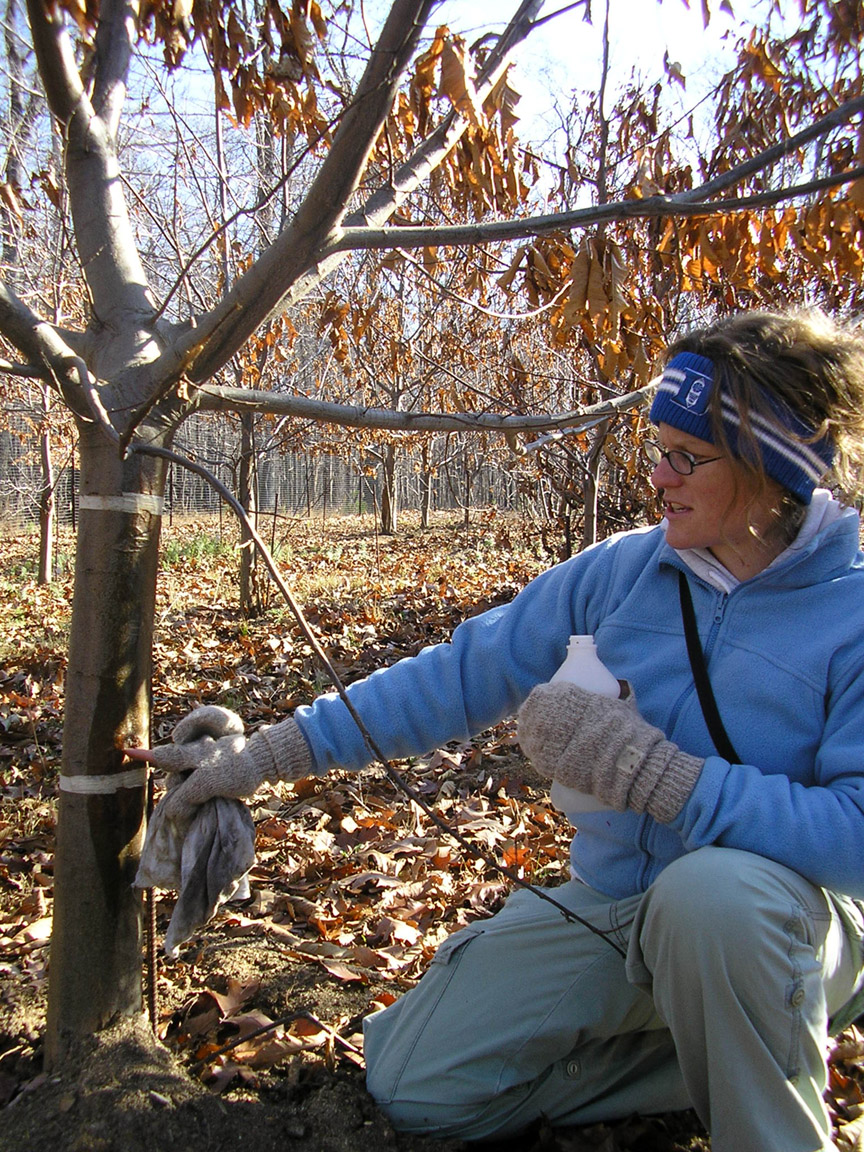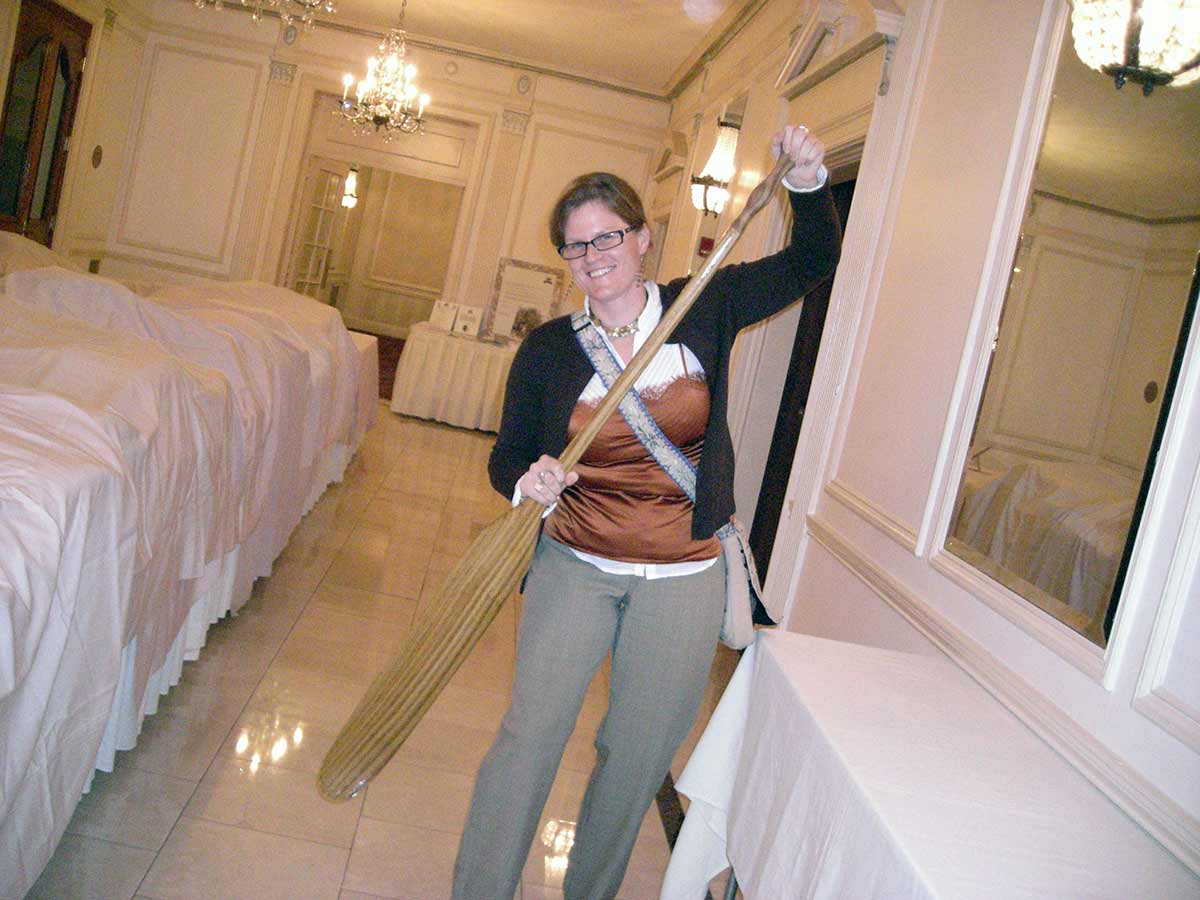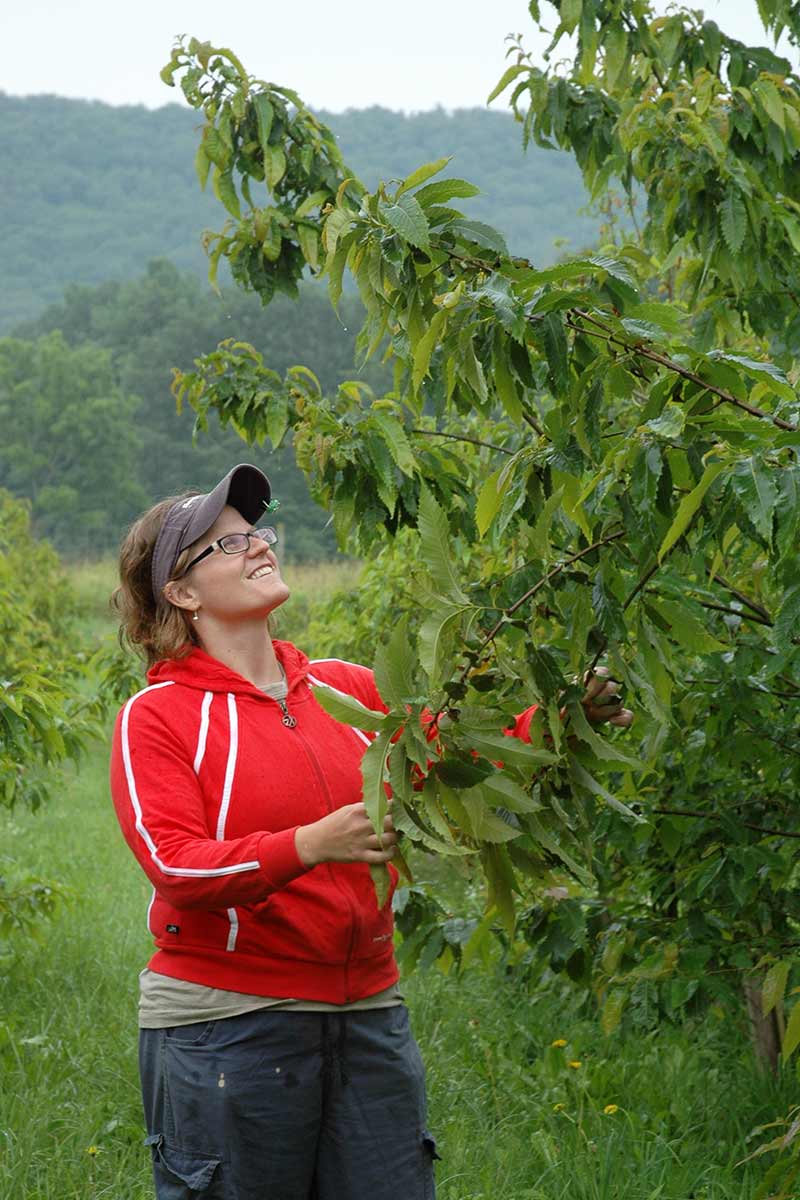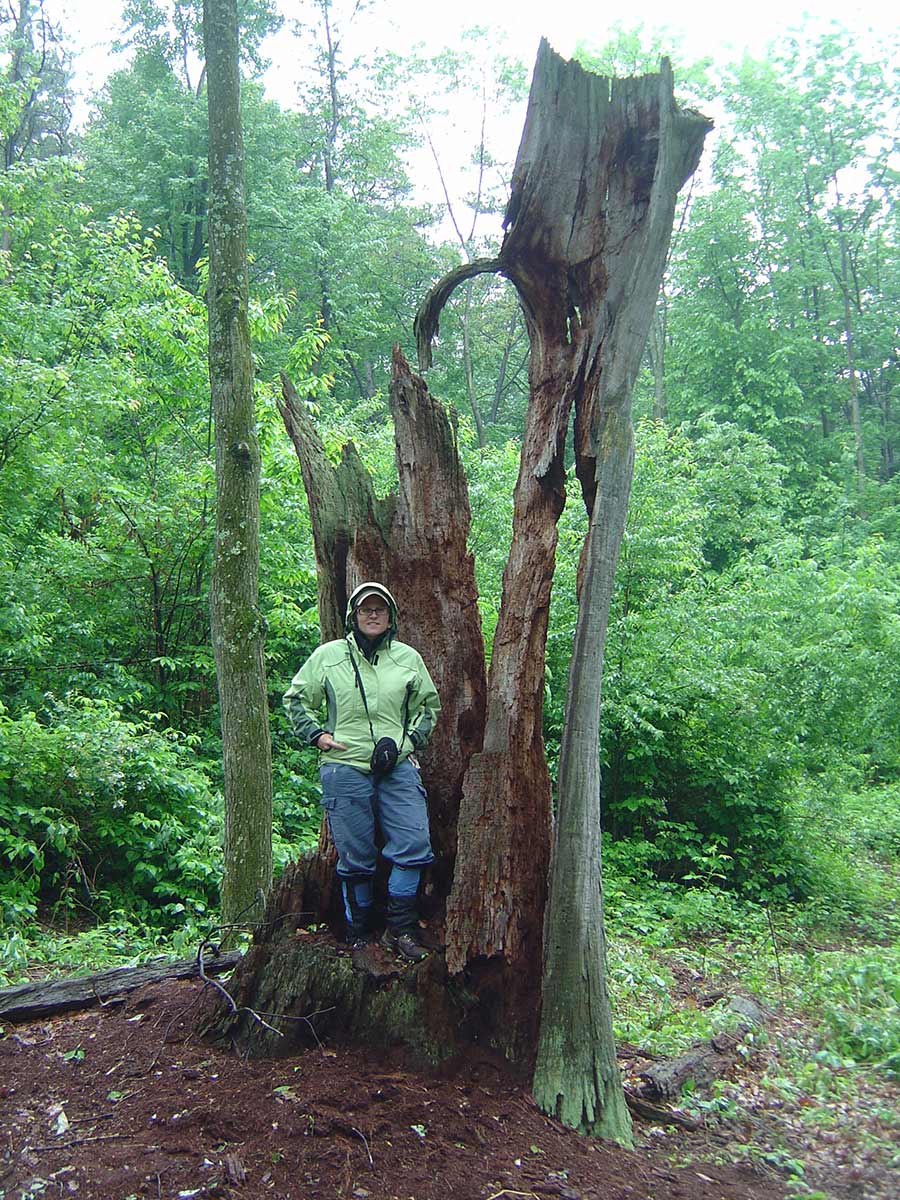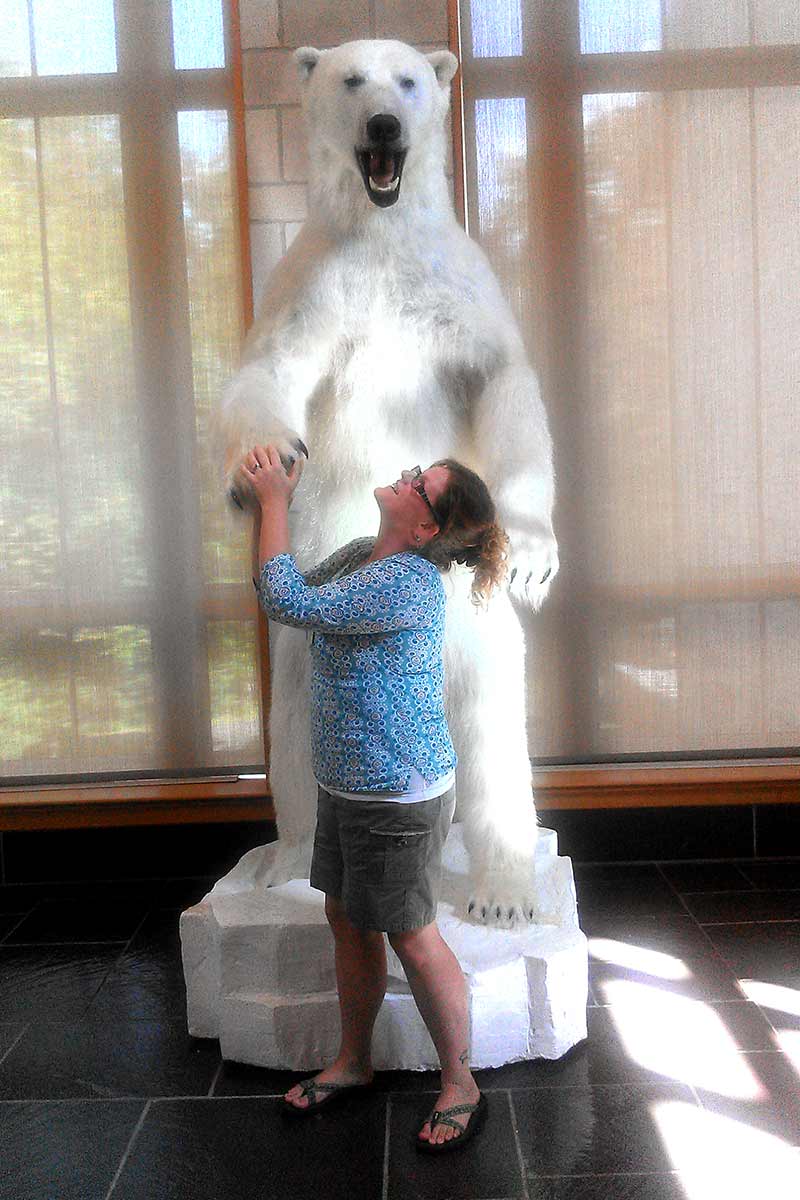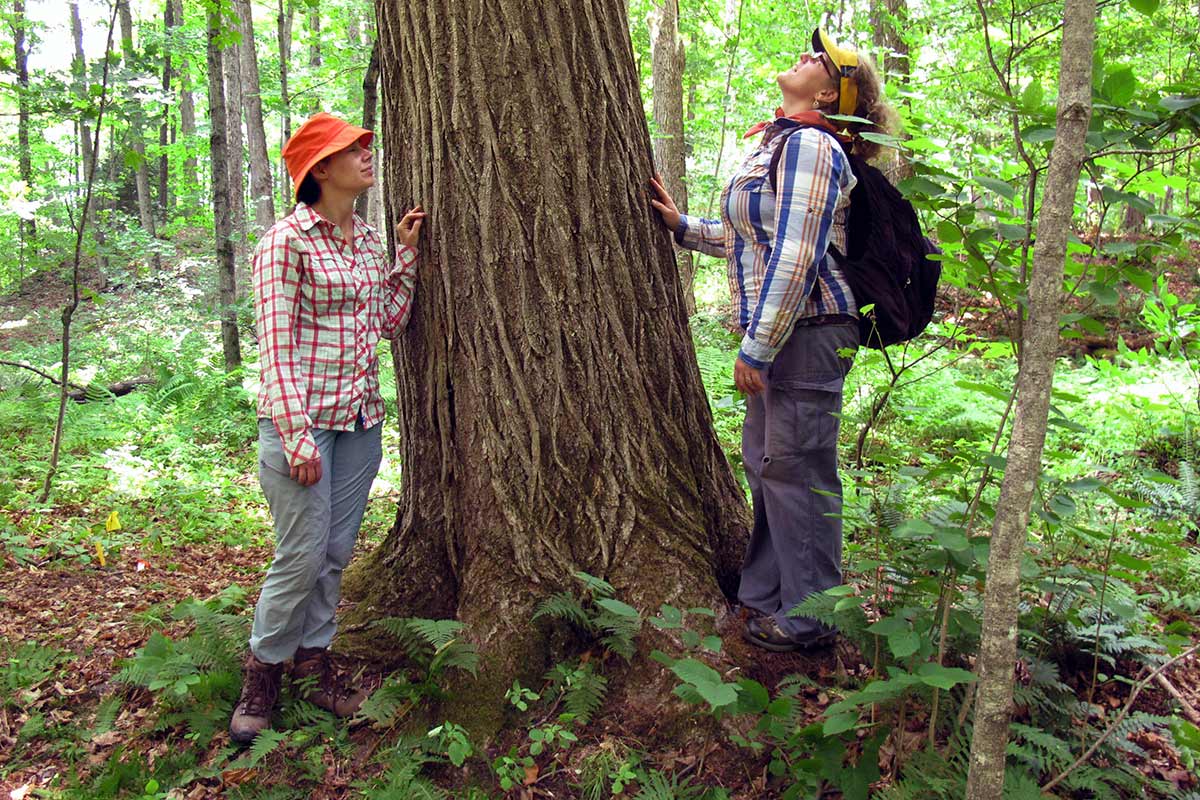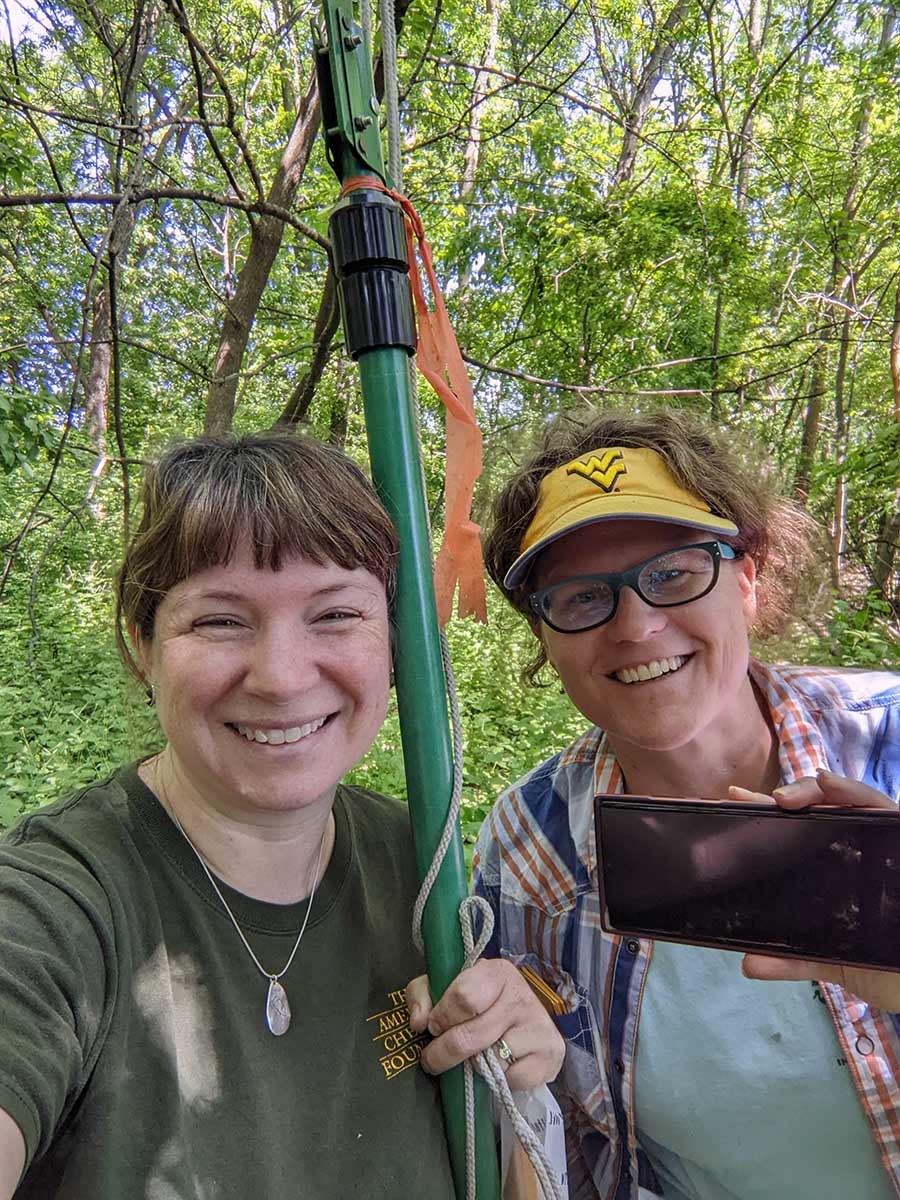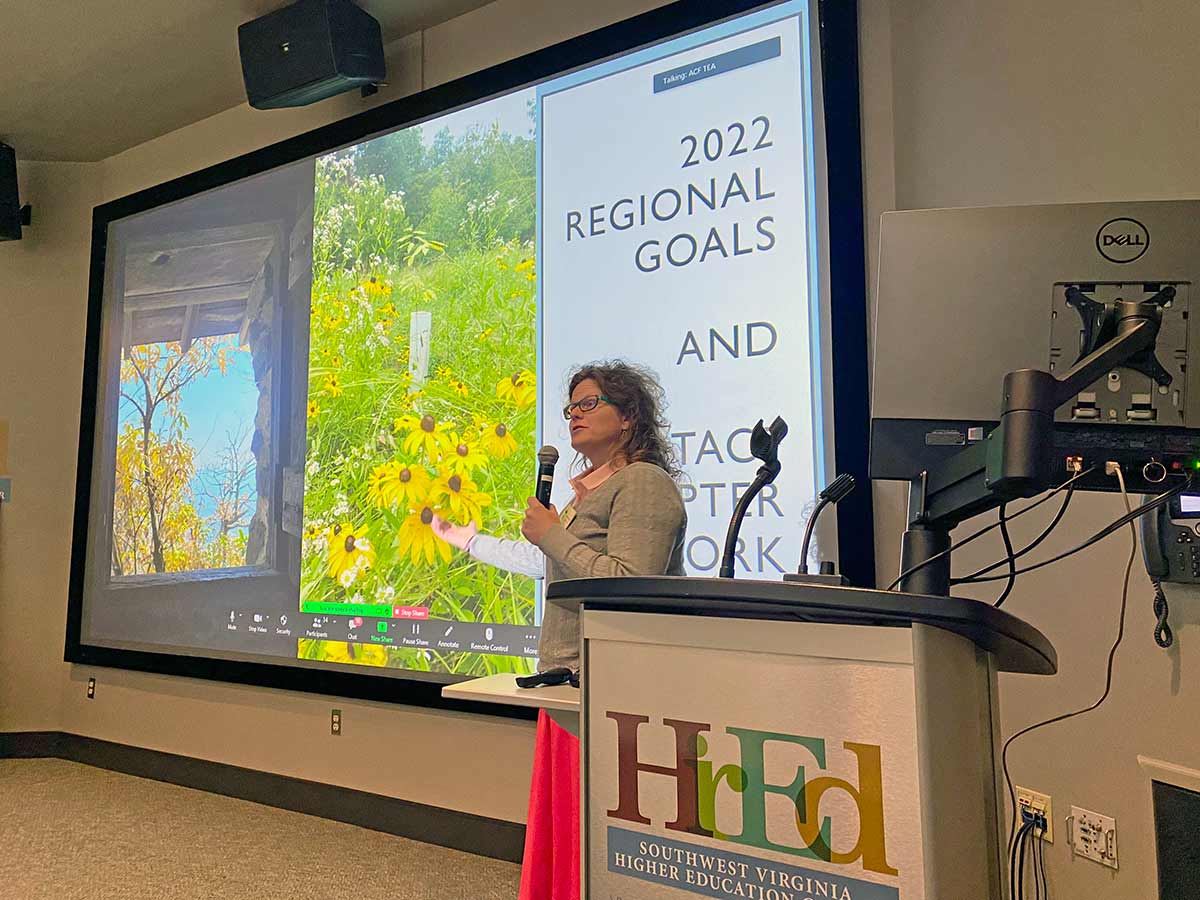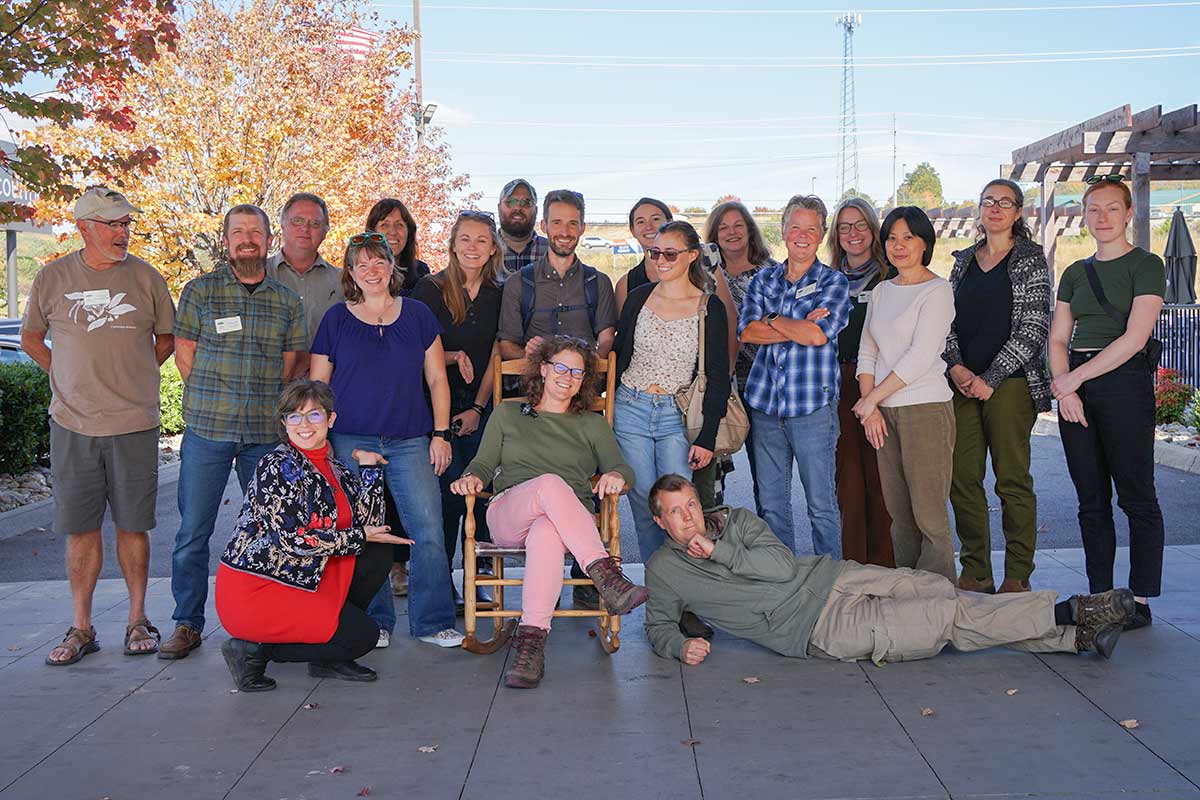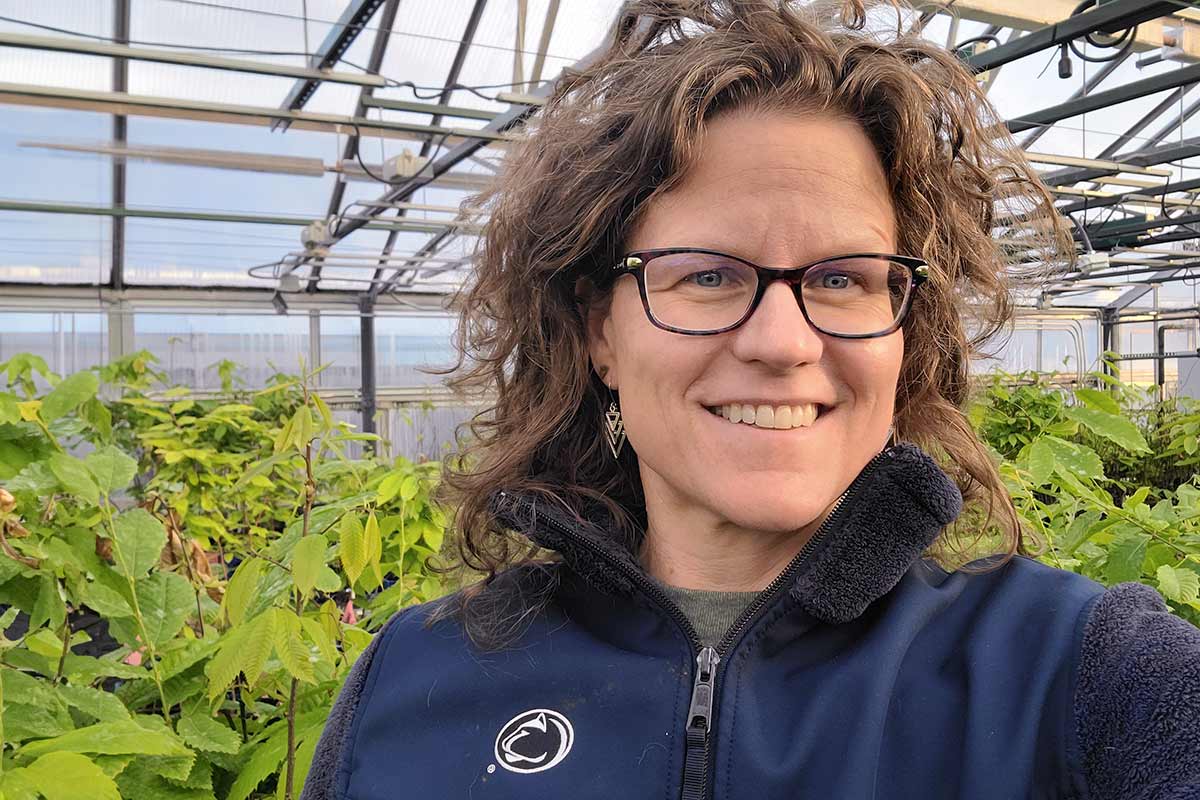2024 Poster Session
Hays, J., Tran, A., Jeffrey, R., Rush, L., & Swatt, J.
CT Chapter of The American Chestnut Foundation
Mitchell College Science Division, Connecticut
SCSU Biology Department, 301 Fitch St, New Haven, Connecticut
Abstract
Chestnut blight, Cryphonectria parasitica , is a parasitic fungus that contributes to the untimely death of chestnut trees, endangering the American chestnut species. Proper pollination is important to produce fertile nuts and increase the number of American chestnut trees. Chestnut trees pollinate by using the pollen from other chestnut trees within a 200-300 meter radius carried over by wind to their flowers. While self pollination can be possible, cross pollination is necessary since male and female flowers do not bloom at the same time on the same tree and cross pollinating yields higher quality nuts. In Connecticut, there are American chestnut trees that are isolated and unable to produce fertile nuts. Previous pollination methods include collecting catkins from other trees, applying pollen to a microscope slide, and manually inseminating the flowers. However, this method is lengthy and requires equipment, money, and proper knowledge to be able to pollinate correctly.
This study proposes a new method that takes advantage of how chestnut trees normally reproduce by hanging catkins from other trees in water around the isolated trees and allowing the wind to naturally pollinate the flowers. At least two branches containing catkins were put at each site and were changed weekly. Readiness to pollinate was determined by the bushiness in catkins and yellow colored emerging styles in flowers. This method is inexpensive and only requires basic knowledge about chestnut tree pollination, allowing the general public to participate and aid in reproduction efforts. Once burs are collected from these trees, the number of fertile nuts will be compared against the number of fertile nuts in trees using the traditional pollination method to see how successful this new method is. The results of this study could provide a more cost effective and accessible solution to increasing the American chestnut population.


